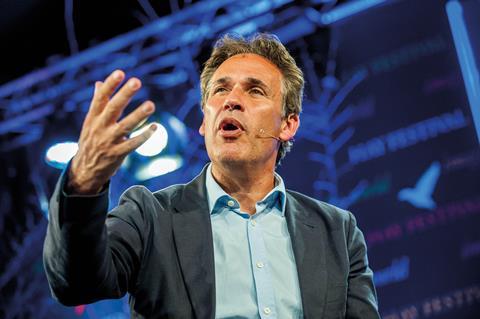Is the pre-eminence of UK legal tech being challenged as competition and client expectations increase in line with innovation?
Legal tech has been disrupting legal services for at least a decade. While the pandemic boosted tech acceptance and adoption, the current focus has shifted from introducing disruptive technologies into the legal sector towards a new normal. Here, data analysis and technology produce more efficient and accessible services. Standardisation, which has always been intrinsic to legal processes in the form of precedents, comes into sharp focus through tech supporting legal services delivery in the business and consumer sectors. However, as even innovation itself becomes standardised, the challenge shifts to differentiation – for law firms, and for the UK as a leader in the lawtech revolution.

Recent discussions play out US legal tech commentator D Casey Flaherty’s observations in 3 Geeks and a Law Blog about the challenges of innovating during a difficult economic, geopolitical and regulatory environment. He refers to companies and their legal advisers facing ‘relentless pressure to cut costs while serving even greater demands from the business as the complexity of the external operating environment explodes’. In other words, this is the return of the ‘more for less’ challenge that features in Professor Richard Susskind’s work as one of the key drivers for legal tech – the other being its ability to increase access to justice.
Flaherty’s comments about innovation and the legal sector’s reluctance to ‘fail fast’ (notwithstanding legal tech’s thriving start-up environment) apply in the UK too. ‘Disruptive projects, by definition, distract from work,’ he writes. Flaherty advocates standardising the ordinary and investing (time and money) in the services that add value/differentiation. While incremental innovation is perhaps less distracting and certainly requires less change management, its return on investment in terms of competitive advantage is harder to define because it shifts client expectations.
At the Legal Innovators conference last week, a panel discussed the question ‘Will standardisation become standard?’ Moderator Martin Coen, CEO of Opus 2, referred to Stuart Kauffman’s ‘adjacent possible’ principle. This introduces innovation in small steps from the familiar, with each step change producing an incrementally higher business impact. Shruti Ajitsaria, head of Fuse, Allen & Overy’s tech innovation hub, expressed this in simpler terms, quoting CEO of Linklaters’ CreateiQ contract lifecycle management platform, Shilpa Bhandarkar’s advice to ‘be 10% braver’.
Standardising and automating documents and processes helps law firms provide ‘more for less’ for their clients, but client expectations have changed too. ‘A lot of our clients come from their panel firms, so they know what can be done,’ explained Sara Collins, head of legal services design at Norton Rose Fulbright. ‘They expect some standardisation, but they also need room to customise.’ However, standardisation, like innovation is no longer static, added Amy Moore, digital legal delivery manager at Gowling WLG. ‘We are always working out the next delighter,’ she said. ‘What was innovative a few years ago won’t impress anyone now.’
'Because legal work is complicated, you can’t workflow processes end-to-end'
Stuart Whittle, Weightmans
Amelia Slocombe, managing director and head of legal at Loan Market Association, explained that because syndicated loan documents are very long, they are designed to be adapted to the commerciality of the transaction. ‘A document may be 75% standard, but you can’t standardise and automate everything because you will need the last 25% to execute the transaction. As we have members in different countries and sectors, certain points will always need to change,’ she explained. However, one advantage of automation is that it avoids ‘unnecessary tinkering’. ‘We need to consider which changes we actually need to make,’ she added.
The Legal Innovators panel flagged up that law is unusual in that the use of language presents a barrier to standardisation and automation. This is partly a cultural issue involving lawyers’ reluctance to relinquish control over their work. A starting point is to decide where the wording matters, and where it does not.

Standardisation can help firms manage processes as well as documents. For Stuart Whittle, chief innovation and technology officer at Weightmans, standardisation is about introducing the core concepts of Atul Gawande’s The Checklist Manifesto into legal work. (This involves using checklists as protection against failure when engaging in complex processes like surgery or flying a plane.) ‘Practical Law has been providing law firms with precedents and standard documents for many years, and there are many standard clauses that are included in nearly all documents,’ he explains, citing GDPR and confidentiality clauses as examples. Applying the checklist approach to legal processes means introducing workflows, where the software takes you through each stage, effectively checking each step off the list. ‘Because legal work is complicated, you can’t workflow processes end-to-end,’ says Whittle. ‘No two lawyers will agree on what should be on the checklist for a complex process, and the client only cares about the outcome. But automating the parts of a contract that don’t add value – like the GDPR clause – enables the lawyer to focus on the nuanced elements that make a difference – and differentiate the firm.’
Whittle has also applied an element of standardisation to the innovation process. While it is impossible to standardise ideation, ‘if someone has an idea, we have a process for thinking about what problem it is going to solve, who is it for, and what effort is involved in developing an idea into something that clients will buy and use’.
Lawtech without borders?
Meanwhile, at Lawtech UK’s Shaping the future of Lawtech event, a panel discussion moderated by Professor Susskind discussed how lawtech can boost the UK’s competitive advantage. The title was based on the hypothesis that UK lawtech was way ahead of other countries. This was underpinned by English law’s international standing, judiciary and lawyers, and the predominance of the English language, as well as government support in the form of LawtechUK.
Fraser Matcham, COO of legal support start-up Legal Utopia, emphasised the value of lawtech being recognised as an export in its own right, rather than as a subset of UK legal services. This would boost the scalability and global competitive advantage of UK lawtech and Lawtech UK. He observed that technology is a challenge as well as an opportunity; for example, automatic translation apps are chipping away at the English language advantage. ‘There’s a perception that we are light years ahead, but there’s a lot of competition simmering in the background,’ he said.
He referred to new developments in African countries which are focused on developing their identities and regulatory structures outside English law, and Singapore’s work in the alternative dispute resolution space. ‘Competitive advantage also depends on the marketing and professional ethics rules in different jurisdictions,’ he added.
Sophia Adams Bhatti, global head of purpose and impact at Simmons & Simmons, highlighted the challenge of complacency, saying that the UK did not have the competitive edge it had ‘even three or five years ago, as Covid… has proven the case for digitalisation in legal services’. She advocated collective action across the lawtech innovation ecosystem, and continued investments in infrastructure, regulatory certainty, and agreed data standards and architecture.
Burnout culture
A Legal Innovators’ panel on how tech can support work-life balance identified culture as a key factor in tech adoption. April Brousseau, director of research and development at Clifford Chance, gave an example of how document review technology enabled an associate to meet a tight deadline before the Christmas holidays. However, online apps also allow people to book diary appointments automatically. Brousseau highlighted the importance of respecting people’s time, particularly in a hybrid working environment. While culture is more than a leadership challenge, strategic direction can help. At a recent Managing Partners Forum Management Team Together session, consultant and lecturer Kevin Doolan advised leaders to spread the burden of cultural responsibility. This involves pushing back on unreasonable client demands rather than continually looking for new ways of meeting them (including new technology). Raising expectations further preserves the burnout culture which is contributing to associate attrition in many large firms.

Too much research and not enough output?
While Matcham noted that government investments are enabling UK companies to build the foundations of lawtech innovation, in the same way as English law is the basis of other legal systems, he added that UK regulators need to engage more closely with lawtech start-ups, so that they can convert their ideas into (exportable) products and services.
Susskind added that the UK risked becoming a repository of great ideas that others can build on rather than a generator of new international offerings. The challenge is to develop products and services that will help the UK lead the way globally. Bhatti agreed: ‘We are doing well at the big vision, but we are not so good at the execution.’
Both commercial and consumer-facing lawtech seems to be shifting focus from disruptive innovation, to developing scalable products and services to maintain and strengthen the UK’s competitive advantage.































No comments yet